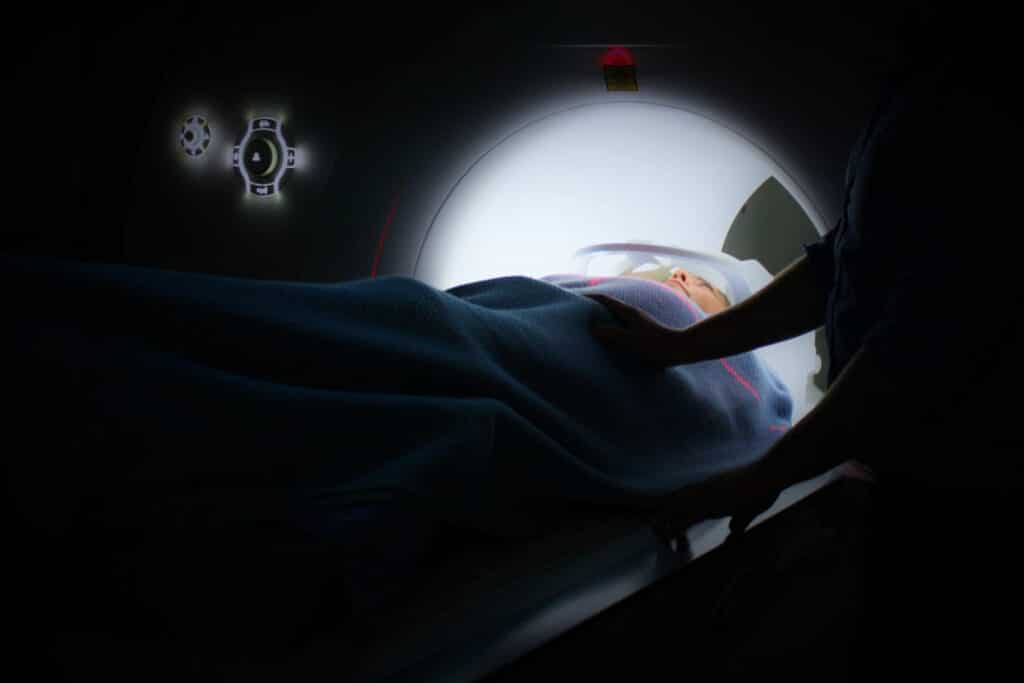Last Updated on July 7, 2024 by Max
Introduction
Welcome to our comprehensive guide on navigating the often-overlooked world of prostate health screenings. The prostate, a walnut-sized gland nestled deep within the male reproductive system, plays a pivotal role in both urinary function and fertility. Despite its size, the issues it may harbor – from benign prostatic hyperplasia (BPH) to prostate cancer – can have profound implications on a man’s quality of life, especially as he ages. Understanding the importance of regular screenings can be a game-changer, particularly for those over 50 or with risk factors that predispose them to prostate health issues.
Types of Prostate Health Screenings

Digital Rectal Exam (DRE): The Digital Rectal Exam, or DRE, stands as a frontline guardian in the early detection of prostate abnormalities. During this brief procedure, a healthcare provider inserts a lubricated, gloved finger into the rectum to palpate the prostate gland. This tactile examination allows the practitioner to assess the size, shape, and texture of the prostate, seeking any irregularities that might indicate conditions such as prostate enlargement, infections, or cancer. Despite its simplicity, the DRE is a powerful tool for early detection, enabling healthcare professionals to identify potential issues even before symptoms arise.
Prostate-Specific Antigen (PSA) Test: The PSA test measures the level of prostate-specific antigen in the blood, a protein produced by prostate cells. Elevated PSA levels can signal the presence of prostate cancer, as well as other prostate conditions like enlargement (BPH) or inflammation (prostatitis). PSA levels are measured in nanograms per milliliter (ng/mL), with readings under 4 ng/mL generally considered within the normal range. However, PSA levels between 4 and 10 ng/mL represent a gray area, indicating a 25% chance of prostate cancer, while levels above 10 ng/mL raise the likelihood to over 50%. It’s crucial to note that PSA levels can be influenced by various factors, including age, race, and certain medical procedures, making it essential to interpret these results within the broader context of each individual’s health profile.
MRI and Ultrasound: When initial screenings like the DRE and PSA test raise concerns, magnetic resonance imaging (MRI) and ultrasound may be employed as follow-up tests. These imaging techniques offer a more detailed view of the prostate, helping to pinpoint areas of concern and guide further diagnostic steps. MRI, with its sophisticated imaging capabilities, can particularly aid in identifying potential cancerous lesions, while ultrasound is often used to assess the prostate’s size and shape and guide needle biopsies.
Biopsy: A prostate biopsy is the definitive method for diagnosing prostate cancer, performed when other screenings suggest the possibility of malignancy. During this procedure, small samples of prostate tissue are extracted, typically guided by ultrasound imaging, to be examined under a microscope for cancer cells. The decision to proceed with a biopsy takes into account various factors, including PSA levels, DRE results, and the patient’s overall health and risk factors. A biopsy can not only confirm the presence of cancer but also provide insights into the aggressiveness of the disease, informing treatment decisions.
Assess Your Prostate Cancer Risk!
Preparing for a Prostate Health Screening: A Step-by-Step Guide
Whether you’re gearing up for a routine check or addressing specific concerns, this guide will walk you through the preparatory steps and what to anticipate during your appointment, ensuring you’re as informed and comfortable as possible.
Before the Screening: Preparation is Key
Familiarize yourself with the screenings you’ll be undergoing, whether it’s a PSA test, DRE, MRI, or ultrasound. Knowing the purpose and process of each test can help alleviate any anxiety.
Depending on the specific screening, you may need to adhere to certain dietary restrictions. For a PSA test, there’s generally no need for fasting, but it’s wise to avoid consuming foods or supplements that may artificially elevate PSA levels, such as biotin, for several days before the test. Inform your healthcare provider about any medications, supplements, or herbal treatments you’re taking, as some may influence test results or increase bleeding risk during a biopsy. Your doctor may advise you to temporarily discontinue certain medications.
If you’re scheduled for a procedure like a biopsy, which involves sedation, plan to have someone accompany you to the appointment and drive you home afterward. Don’t hesitate to ask your healthcare provider any questions you have about the screening process, including potential risks and how the results will be communicated to you.
During the Appointment: Ensuring Comfort and Clarity
Arrive on time, with your insurance information and any required forms. This is also the time to clarify last-minute questions or concerns. For a DRE, you’ll be asked to undress from the waist down and drape a cloth around your waist. You’ll either stand and bend forward at the waist or lie on your side with knees drawn up to your chest. The doctor will then gently insert a lubricated, gloved finger into the rectum to feel the prostate. Deep breathing can help ease discomfort during the exam. The PSA test is a simple blood draw, usually from the arm. It’s quick and straightforward, with minimal discomfort. For an MRI or ultrasound, you’ll be asked to lie still on a table. For an ultrasound-guided biopsy, a lubricated probe is inserted into the rectum to image the prostate. The area is numbed, and then small tissue samples are taken with a needle. Breathing calmly and following the technician’s or doctor’s instructions will help minimize discomfort.
If you’ve had a biopsy, you may experience some soreness or light bleeding. Your healthcare provider will give you specific post-procedure instructions, including signs of complications to watch for and how to manage any discomfort.
After the Screening: Understanding the Next Steps
Your healthcare provider will inform you about how and when you’ll receive your results. If further action is needed, they’ll discuss the next steps, whether it’s additional testing, monitoring, or discussing treatment options for any conditions discovered during the screening. Preparing for and undergoing prostate health screenings doesn’t have to be a source of stress.
Whether you’re approaching your first screening or following up on test results, here are key questions to help you engage in a meaningful discussion with your doctor:
| Understanding Risk Factors | What are my risk factors for prostate cancer or other prostate issues? How do my age, family history, race, and lifestyle affect my risk level? Are there any specific symptoms or signs I should watch for given my risk profile? |
| The Need for Screening | At what age should I start getting screened for prostate issues? Given my risk factors, how often do you recommend I undergo screening? Can you explain the different screening tests available (PSA, DRE, MRI, etc.) and which you recommend for me? What are the potential benefits and risks associated with prostate screenings? |
| Interpreting Screening Results | Can you help me understand what the results of my screening tests mean? If my PSA levels are elevated, what might be the cause, and what additional tests will you recommend? How do you differentiate between benign conditions and cancer in screening results? |
| Next Steps After Abnormal Screening Results | If my screening results are abnormal, what are the next steps? Will I need a biopsy to confirm the diagnosis, and how is it performed? Can you explain the possible outcomes of a biopsy and what each outcome means for my health? |
| Treatment and Management Options | What treatment options are available if my screenings indicate prostate cancer or another condition? How do we decide on the best treatment plan for my situation? Are there lifestyle changes or preventive measures I can take to reduce my risk or manage my condition? |
| Support and Resources | Can you recommend any resources for further information or support regarding prostate health? Are there support groups or counseling services you recommend for patients dealing with prostate health issues? |
By preparing these questions, you’re not just seeking answers; you’re actively participating in your healthcare journey.
Interpreting the Results: A Guide to Understanding Prostate Screenings
Understanding what comes next after prostate screenings involves delving into the nuances of PSA levels and the findings from a digital rectal exam (DRE), which can be somewhat confusing. Let’s simplify these outcomes, exploring what they indicate and the potential directions for further examination or interventions.
When it comes to PSA levels, context is everything. Levels below 4 ng/mL are often seen as within the normal range, suggesting a lower risk of prostate cancer, though it’s important to remember that cancer can still occur at these levels. Levels between 4 to 10 ng/mL enter a gray area, raising the possibility of prostate cancer with about a one in four chance in this range. Above 10 ng/mL, the concern for prostate cancer increases significantly, though high PSA can also result from other prostate conditions like prostatitis or benign prostatic hyperplasia (BPH). PSA levels are influenced by a variety of factors, including but not limited to age, race, and even certain medical procedures or medications, which is why a single PSA measurement is only part of the larger diagnostic picture.
Following an abnormal DRE or elevated PSA level, the journey doesn’t head straight towards a cancer diagnosis but rather towards further clarification. This means repeating the PSA test to verify initial results due to the common fluctuations in PSA levels. There could be a recommendation for additional blood tests that look beyond PSA, like the free PSA test, which examines the ratio of “free” PSA in the bloodstream and can help in assessing cancer risk.
Imaging tests such as an MRI or a transrectal ultrasound provide a clearer image of the prostate, pinpointing areas that may require a biopsy. A biopsy, where small samples of prostate tissue are examined for cancer cells, remains the definitive method for diagnosing prostate cancer. For men diagnosed with low-risk prostate cancer or those with elevated PSA but negative biopsy results, active surveillance could be suggested. This method involves monitoring the condition closely without immediate treatment, saving interventions for any signs of progression.
Treatment options, if cancer is confirmed, vary widely based on the stage and grade of the cancer, along with the patient’s overall health and treatment preferences. Options range from surgery and radiation therapy to hormone therapy, depending on the specific circumstances.
The Debate Around Screening
The debate surrounding prostate cancer screening, particularly the use of the Prostate-Specific Antigen (PSA) test, is underscored by a mix of statistical findings and clinical outcomes.
The Benefits of Screening
Screening can lead to early detection of aggressive prostate cancers. A landmark European study, the European Randomized Study of Screening for Prostate Cancer (ERSPC), reported a 21% reduction in prostate cancer-specific mortality over 13 years among men offered PSA screening compared to those not screened. The detection of prostate cancer at an early stage significantly improves long-term survival rates. The 5-year survival rate for most men with local or regional prostate cancer is nearly 100%, according to the American Cancer Society.
The Risks of Overdiagnosis and Overtreatment
Estimates suggest that between 23% to 42% of prostate cancers detected by PSA tests may be overdiagnosed, meaning these cancers would not have caused symptoms or affected the men’s lifespan if left undetected (Pinsky et al., 2019).
Treatments for prostate cancer, including surgery and radiation therapy, can lead to significant side effects, such as urinary incontinence and erectile dysfunction. Data indicates that up to 50% of men experience these long-term side effects following radical prostatectomy or radiation therapy.
The Need for a Balanced Approach
The challenge lies in identifying men who will benefit from early detection and treatment versus those who may endure unnecessary anxiety and treatment side effects from overdiagnosis. This balance is crucial, as the PSA test does not differentiate between aggressive and slow-growing tumors.
Reflecting a shift towards minimizing overtreatment, the use of active surveillance for low-risk prostate cancer has significantly increased. Studies indicate that active surveillance in men with low-risk prostate cancer has surged from about 10% in the early 2000s to over 40% in recent years (Cooperberg et al., 2015).
These statistics highlight the complex interplay between the potential life-saving benefits of early detection and the risks associated with the treatment of cancers that may never cause harm.
Guidelines and Recommendations
Navigating the landscape of prostate cancer screening involves understanding the guidelines set forth by leading health organizations. These recommendations aim to balance the benefits of early detection with the risks associated with screening and subsequent interventions. Here’s a summary of the current guidelines from the American Cancer Society (ACS) and the U.S. Preventive Services Task Force (USPSTF) regarding prostate cancer screening:
American Cancer Society (ACS) Guidelines
- Age to Start Screening: The ACS recommends that men make an informed decision with their healthcare provider about whether to be screened for prostate cancer. The discussion about screening should take place at:
- Age 50 for men at average risk of prostate cancer who are expected to live at least 10 more years.
- Age 45 for men at high risk. This includes African Americans and men who have a first-degree relative (father, brother, or son) diagnosed with prostate cancer at an early age (younger than 65).
- Age 40 for men at even higher risk (those with more than one first-degree relative who had prostate cancer at an early age).
- Screening Frequency: For men who choose to be screened after the initial discussion, the ACS does not specify exact screening intervals. The frequency of PSA tests should be based on the initial PSA level, with men having a PSA less than 2.5 ng/mL retested every 2 years and those with a PSA 2.5 ng/mL or higher retested yearly.
U.S. Preventive Services Task Force (USPSTF) Guidelines
- Age to Start Screening: The USPSTF recommends individualized decision-making about prostate cancer screening for men aged 55 to 69 years. Men in this age group should discuss the potential benefits and harms of PSA-based screening with their healthcare provider and make a decision based on their personal values and preferences.
- Screening Frequency: While the USPSTF does not provide a specific screening interval, it suggests that for men who choose to undergo screening, intervals of two years may reduce the harms of screening (such as false-positive results and unnecessary biopsies) compared to annual screening.
- Men Over 70: The USPSTF recommends against PSA-based screening for prostate cancer in men 70 years and older, considering the potential benefits do not outweigh the expected harms in this age group.
These guidelines underscore the importance of a personalized approach to prostate cancer screening, taking into account individual risk factors, health status, and personal preferences.
Conclusion
The path to maintaining prostate health is about taking control of your health narrative and making decisions that align with your life, your values, and your well-being. I encourage every man reading this to take a moment to reflect on their health journey and consider their prostate health a priority. Engage with your healthcare provider to discuss prostate health and screening options.
Call to Action
Now, I turn to you with a call to action. If you’re within the recommended age group for screening or have risk factors that heighten your susceptibility to prostate issues, I urge you to schedule a screening. Early detection can be a game-changer, offering peace of mind or opening pathways to timely and effective treatment. But don’t stop there—share this knowledge with your circle. Talk to your fathers, brothers, friends, and any loved one who may benefit from this information. By spreading awareness, you’re not just sharing information; you’re potentially saving lives and fostering a community of health-conscious and empowered individuals. The journey through prostate health is personal, but it’s one that doesn’t have to be walked alone.
Resources for More Information
- American Cancer Society (ACS): Provides comprehensive guidelines and information on cancer prevention, screening, and treatment. https://www.cancer.org/cancer/prostate-cancer
- U.S. Preventive Services Task Force (USPSTF): Offers evidence-based recommendations on screening, including prostate cancer screenings. https://www.uspreventiveservicestaskforce.org/
- National Cancer Institute: The federal government’s principal agency for cancer research and training. https://www.cancer.gov/types/prostate
- Prostate Cancer Foundation: Dedicated to funding world-class research and raising awareness about prostate cancer. https://www.pcf.org/







